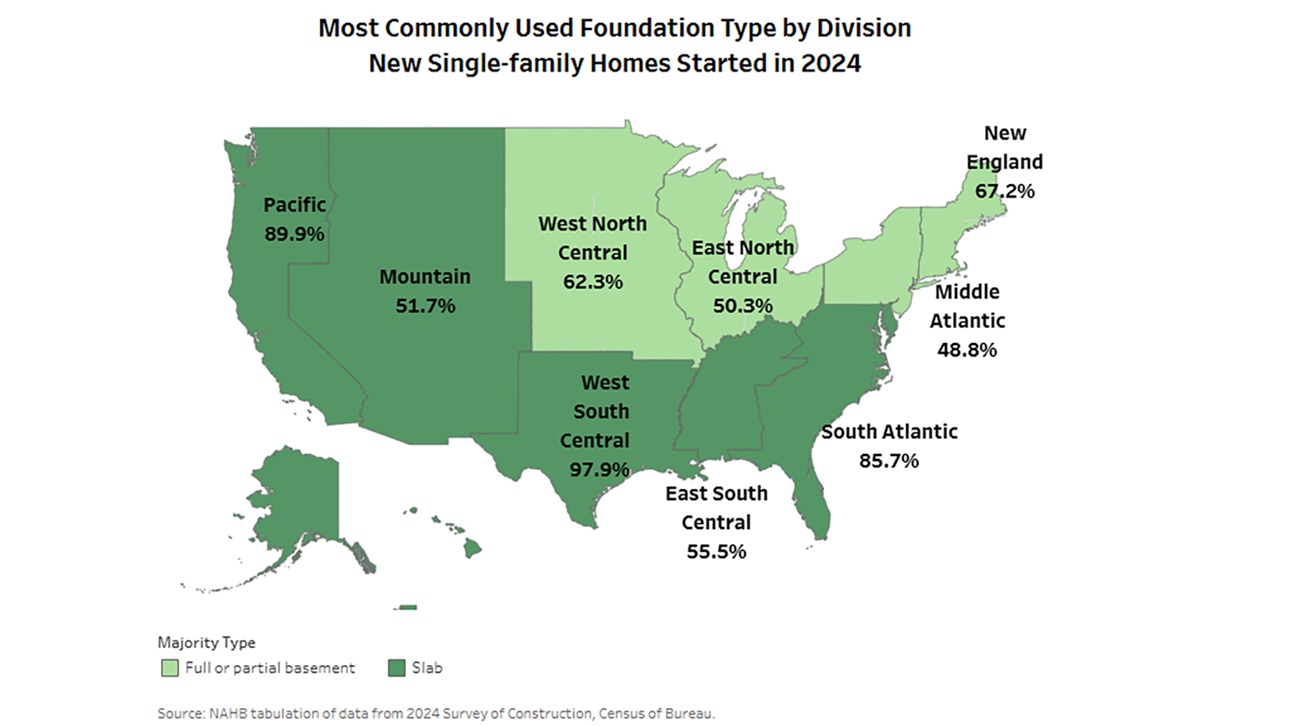Which Foundation Type Is Most Common in Your Region?
In 2024, 73% of new single-family homes started were built on slab foundations, according to NAHB analysis of the U.S. Census Bureau’s Survey of Construction (SOC). Although this was a modest year-over-year increase of 0.6 percentage points, it continues the upward trend in slab adoption, widening the gap between slabs and other foundation types.
In comparison, basements (full or partial) accounted for 17% of new homes, while crawl spaces made up just 9.2%.

Foundation type continues to follow regional climate patterns. In colder northern divisions, where foundations extend below the frost line, basements are more common. In 2024, the majority of homes in New England (67.2%), West North Central (62.3%), East North Central (50.3%) and the Middle Atlantic (48.8%) were built with full or partial basements.
In contrast, warmer regions favor slab foundations for their affordability and efficiency. Nearly all new single-family homes in West South Central (97.9%), Pacific (89.9%) and South Atlantic (85.7%) divisions were built on slabs in 2024. The cost advantages of slabs have also led to increased adoption in some northern divisions — especially post-pandemic, as rising material costs and supply chain disruptions pushed builders to prioritize cost-effective construction methods.
Crawl space foundations have seen a long-term decline. While East South Central and Pacific divisions have historically led in crawl space usage, both have experienced noticeable decreases, particularly the Pacific, which saw a sharp drop in the past decade.
NAHB Economist Catherine Koh provides more details in this Eye on Housing post.
